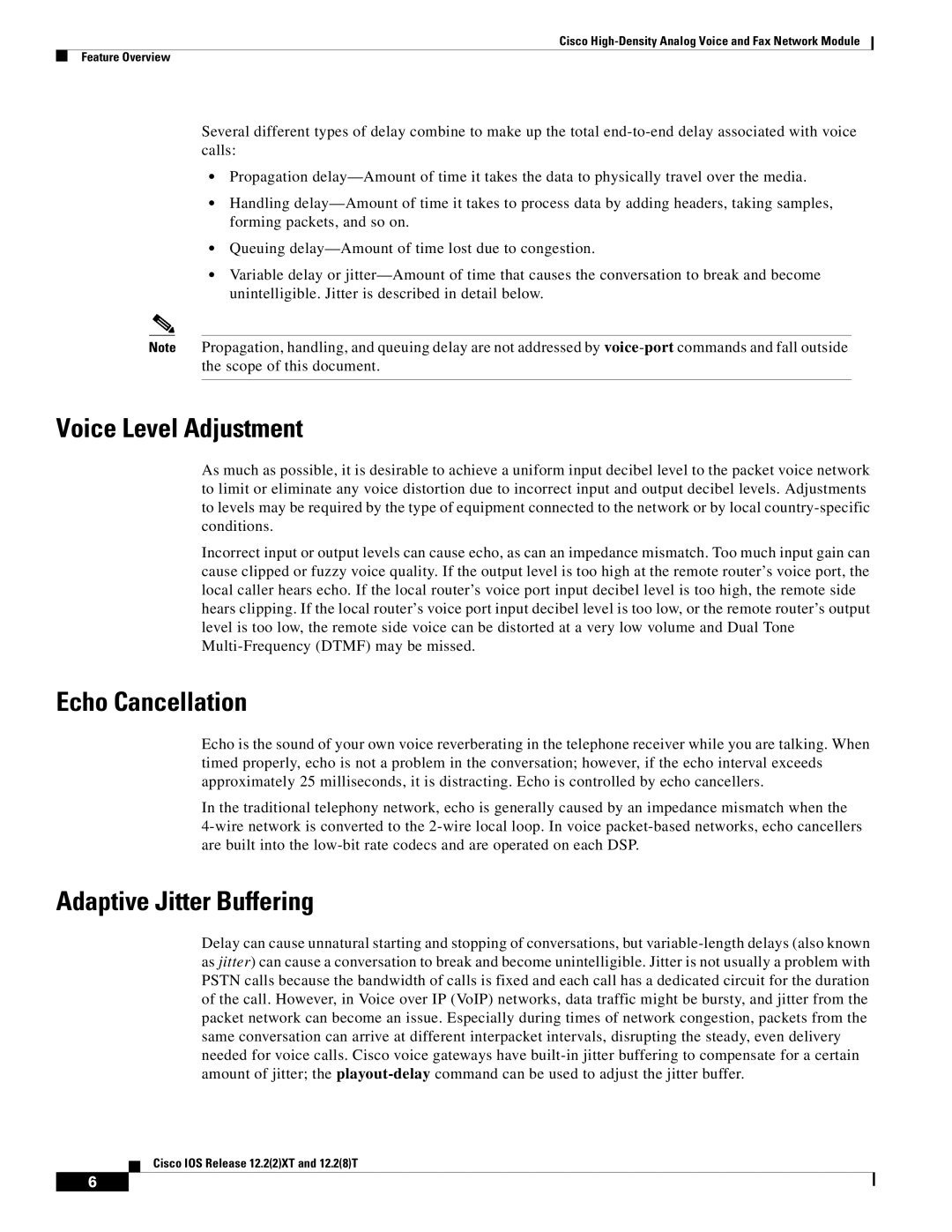
Cisco
Feature Overview
Several different types of delay combine to make up the total
•Propagation
•Handling
•Queuing
•Variable delay or
Note Propagation, handling, and queuing delay are not addressed by
Voice Level Adjustment
As much as possible, it is desirable to achieve a uniform input decibel level to the packet voice network to limit or eliminate any voice distortion due to incorrect input and output decibel levels. Adjustments to levels may be required by the type of equipment connected to the network or by local
Incorrect input or output levels can cause echo, as can an impedance mismatch. Too much input gain can cause clipped or fuzzy voice quality. If the output level is too high at the remote router’s voice port, the local caller hears echo. If the local router’s voice port input decibel level is too high, the remote side hears clipping. If the local router’s voice port input decibel level is too low, or the remote router’s output level is too low, the remote side voice can be distorted at a very low volume and Dual Tone
Echo Cancellation
Echo is the sound of your own voice reverberating in the telephone receiver while you are talking. When timed properly, echo is not a problem in the conversation; however, if the echo interval exceeds approximately 25 milliseconds, it is distracting. Echo is controlled by echo cancellers.
In the traditional telephony network, echo is generally caused by an impedance mismatch when the
Adaptive Jitter Buffering
Delay can cause unnatural starting and stopping of conversations, but
Cisco IOS Release 12.2(2)XT and 12.2(8)T
6
